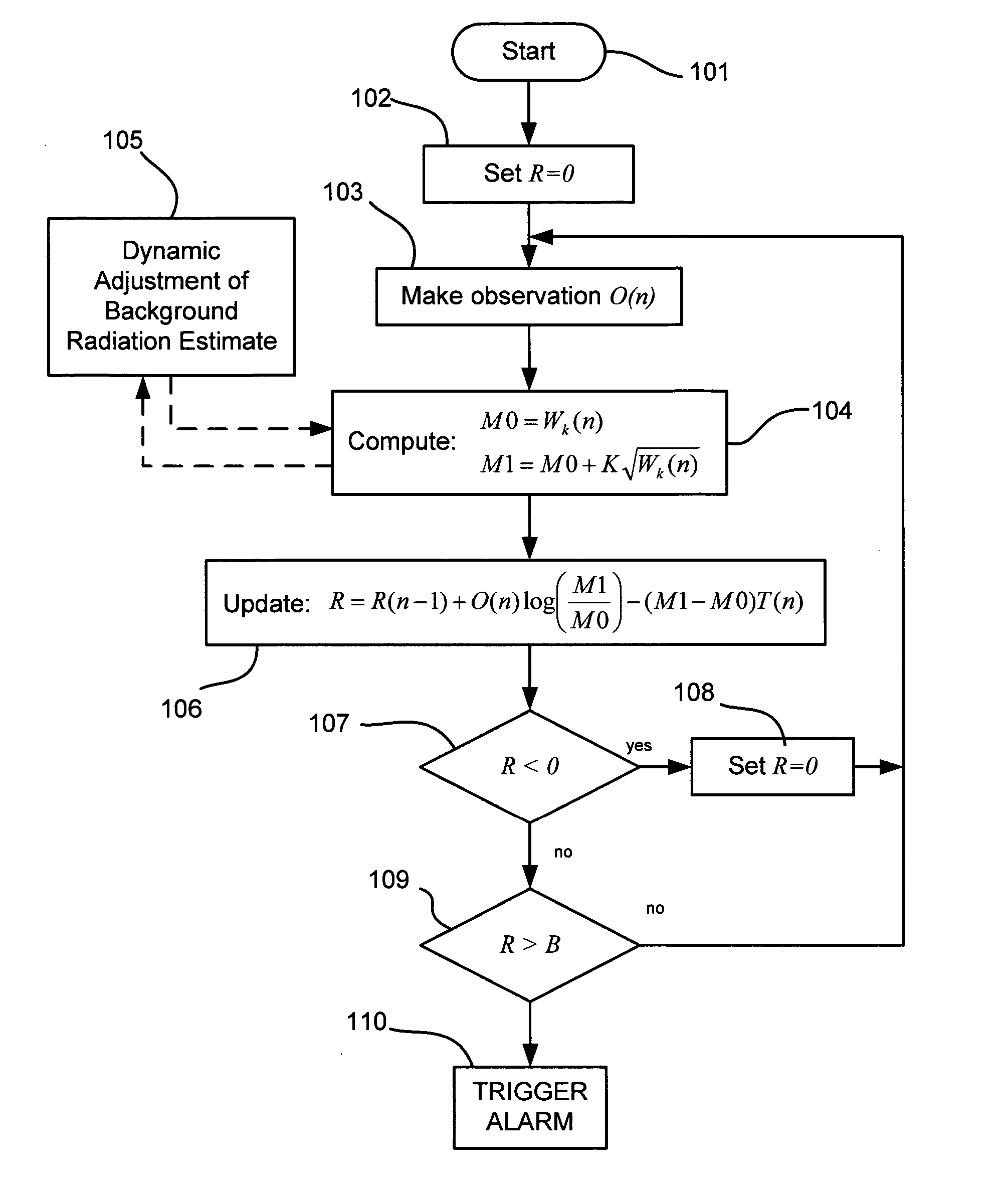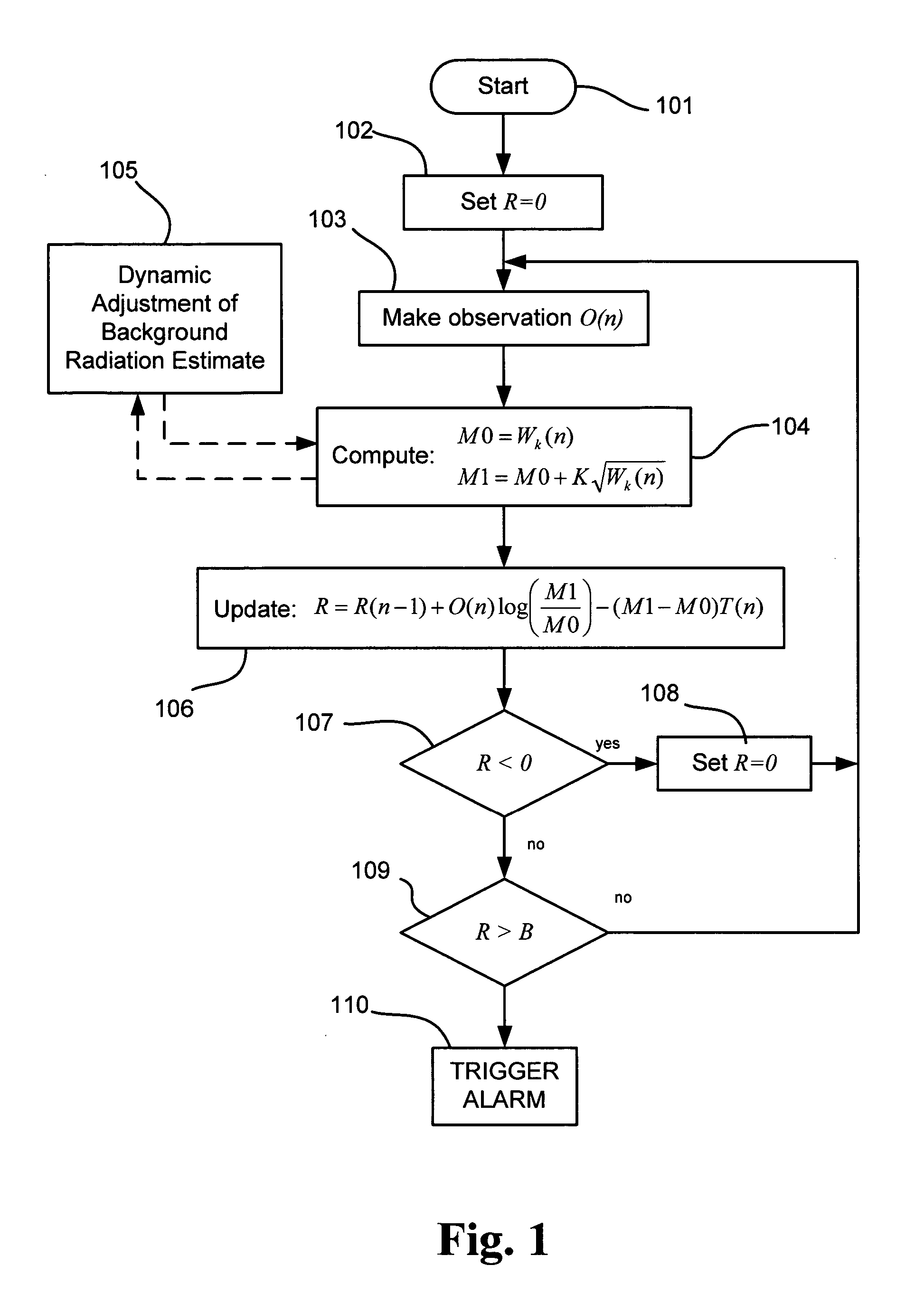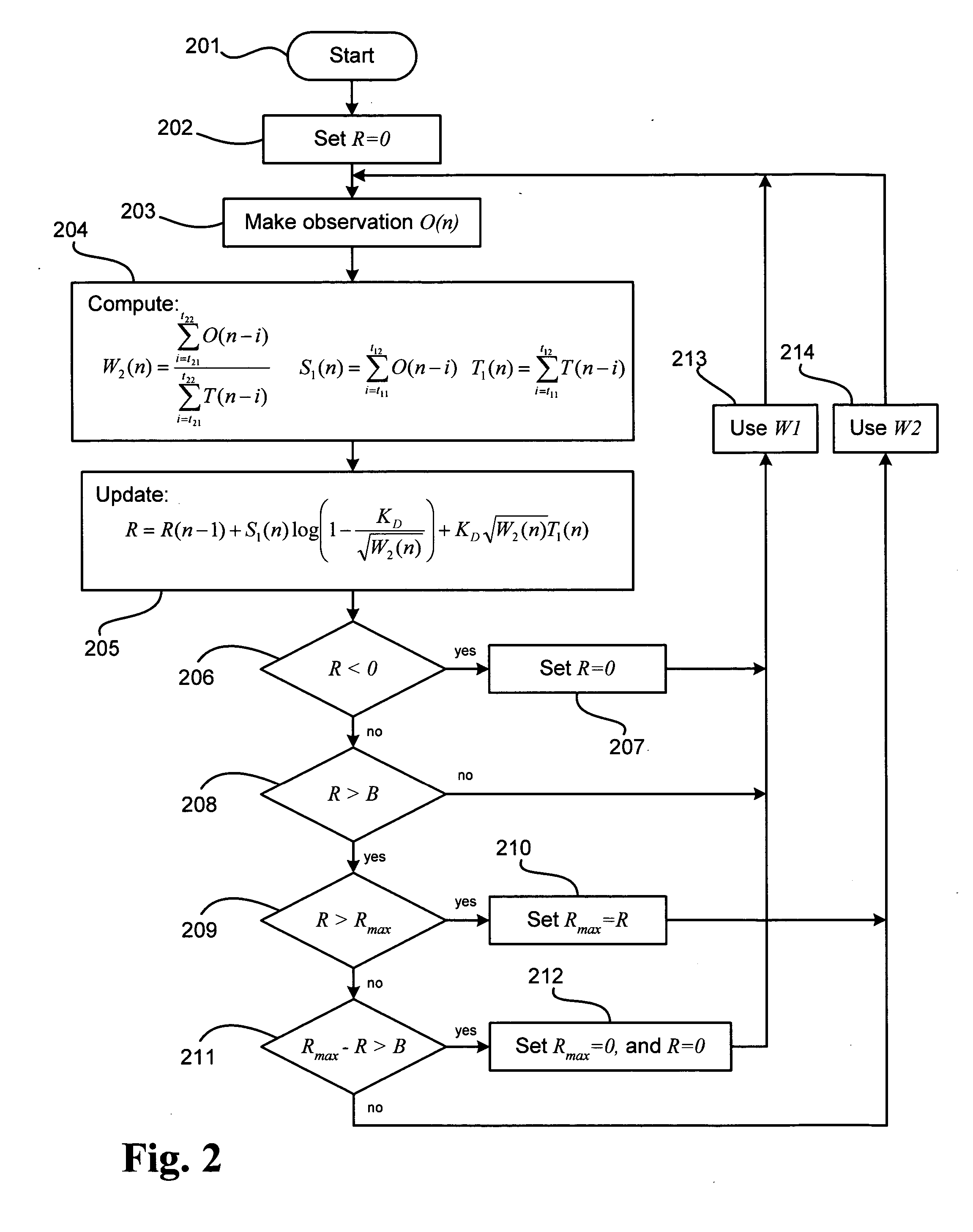Radiation detection method and system using the sequential probability ratio test
a probability ratio and detection method technology, applied in the field of radioation detectors and detection methods, can solve the problems of difficult to determine “a priori, difficult to rely on a single parameter set, and difficult to detect radioactive substances
- Summary
- Abstract
- Description
- Claims
- Application Information
AI Technical Summary
Benefits of technology
Problems solved by technology
Method used
Image
Examples
Embodiment Construction
[0021] Generally, the present invention pertains to a radiation detection method and system using the SPRT for triggering an alarm or otherwise providing event notification in radiation detection equipment upon detecting an elevated background radiation event in a field of view. The basic purpose of the device is to provide a proximity alarm whenever a radiation source has entered the field of view (FOV) at a rate consistent with a vehicle traveling through the detection area. This is accomplished without the aid of a presence detector and with no predefined paths of travel.
[0022] For this purpose, it is appreciated that the present invention includes, or is adapted to operate in conjunction with one or more radiation sensors, such as for example, NaI, scintillator, or He3 neutron detector) which are capable of detecting neutrons and / or gammas and producing either simple gross counts or an energy spectrum. Thus the present invention may be incorporated into and utilized with radiat...
PUM
 Login to View More
Login to View More Abstract
Description
Claims
Application Information
 Login to View More
Login to View More - R&D
- Intellectual Property
- Life Sciences
- Materials
- Tech Scout
- Unparalleled Data Quality
- Higher Quality Content
- 60% Fewer Hallucinations
Browse by: Latest US Patents, China's latest patents, Technical Efficacy Thesaurus, Application Domain, Technology Topic, Popular Technical Reports.
© 2025 PatSnap. All rights reserved.Legal|Privacy policy|Modern Slavery Act Transparency Statement|Sitemap|About US| Contact US: help@patsnap.com



